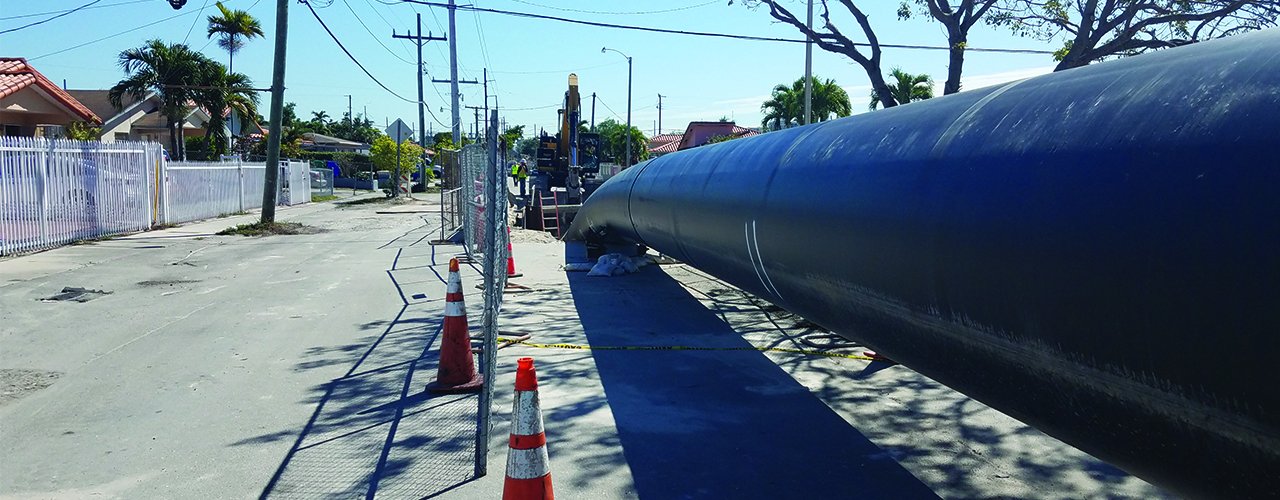BLOG
Trenchless Technology for the Win

Everybody loves a torn-up road, am I right? Wrong. Roads ravaged for infrastructure repair create congestion, induce headaches and demand dollar signs.
There has to be a better way to repair infrastructure, especially water pipelines, than digging massive trenches hundreds of feet long.
Enter trenchless technology.
I’ve been using trenchless techniques for several years to perform infrastructure repair, and I can attest to how well the approach works.
Here’s a short primer for those of you unfamiliar with the method. First, instead of opening the ground immediately over the pipeline—regardless of the surroundings affected—we dig pits on either side of the repair section. These pits provide access while protecting above-ground functionality.
After opening the repair section, we insert new high-density polyethylene (HDPE) pipe into the existing pre-stressed concrete pipe. Then, with excavators on the far side of the repair, we pull the new pipe into place—without damaging the roadway above.
Sounds like a great process, right? In many ways, it is a superior method. With relatively less effort than conventional methods, we can minimize damage to the surrounding landscape—and lessen public inconvenience. Additionally, projects completed with trenchless technology generally cost less and take less time to complete than traditional open-cut techniques.
Benefits aside, there are a few cases in which trenchless technology is not a viable option for infrastructure repair. For example, if the damaged pipe has collapsed, there is no way to maneuver the new pipe inside. And in other cases, despite the increased flow offered by the smooth HDPE pipe, some pipelines would still experience unacceptable reductions in capacity.
Keep in mind that there is no such thing as a challenge-free infrastructure repair project, even with trenchless technology. On one such recent project, the access pits kept filling with water due to a near-surface water table. To avoid damaging storm drains, we snaked over 400 feet of hose through the stormwater pipeline and pumped the excess water directly to the stormwater outfall.
The trenchless technology trend has the potential to benefit construction projects the world over.

Daniel Rey
Daniel Rey has over seven years of experience completing stormwater and wastewater projects in Florida. His background in design-build projects and on-site construction inspection experience help him to navigate complicated statewide water design and construction projects.